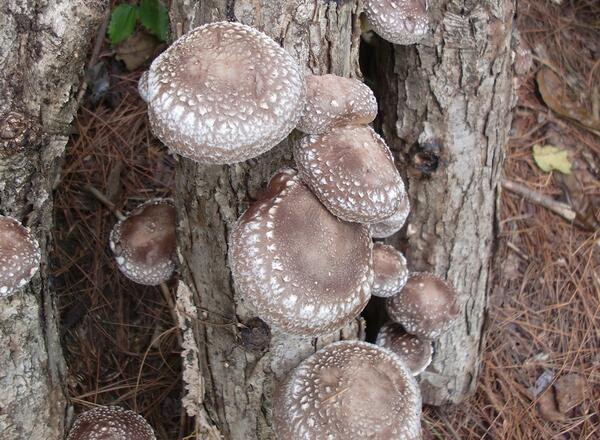
Many gourmet species of mushroom grow on dead or dying hardwood trees in the wild. Their lifecycles can be highly complex and highly tuned to environmental conditions: temperature, moisture content, humidity. That's why many gourmet species are not commonly found in the wild.
Using Logs
Log-farming is the inoculation of hardwood logs with mushroom inoculum (either inoculated wooden dowels or myceliated sawdust), followed by specialized care of the logs over a period of months to years that create opportunities for the logs to “fruit” aka produce mushrooms for harvest.
This is achieved by using a drill or other specialized equipment and hammer or inoculation tool, inserting sawdust or inoculated wooden plugs into drilled holes, covering with food-grade, melted wax, to facilitate mycelium colonization of the log’s wood over time; after full colonization, mushrooms will fruit from logs during ideal conditions such as a rainy period or weather fluctuation
Totem-farming is very similar to log-farming and is the cutting apart of large, standing logs and then inoculation of logs by stacking them together after sandwiching inoculating mycelium products such as sawdust spawn between log-cuts, creating “totems.” After colonization, mushrooms will fruit from the juncture points between slices of logs during ideal conditions such as a rainy period or weather fluctuation
NOTE: Some specialized equipment is also necessary to make mushroom logs (otherwise known as bolts, as well as totems). This equipment is typically not usable for bag/block culture indoors, such as specialized drill bits, chainsaws, and other tools.
Mushroom inoculation vendors
University of Cornell Extension Small Farms details the process of block farming of specialty mushrooms, enterprise budgets for mushroom farms, and considerations for beginning and current growers, including “buying in” vs. creating their own fruiting blocks.